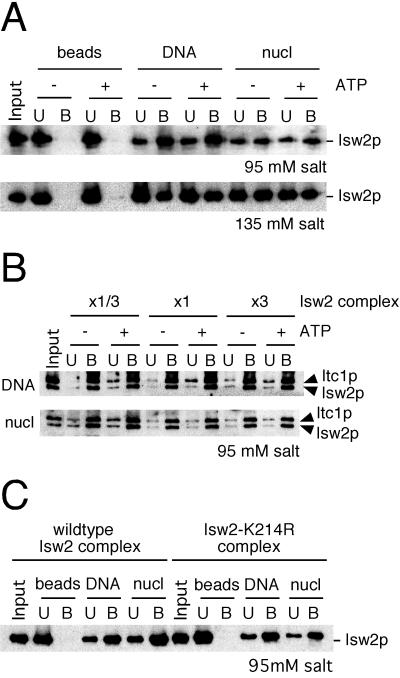FIG. 3.
Isw2 complex interacts with DNA and nucleosomal arrays in an ATP-independent manner. (A) Interaction of Isw2 complex with immobilized templates. The interaction assay was performed by incubating Isw2 complex with beads alone, immobilized DNA, or immobilized nucleosomal arrays (nucl) in the presence or absence of ATP at 95 or 135 mM salt. The supernatant was collected, beads were washed, and bound proteins were eluted from the beads in SDS-PAGE sample buffer. Equivalent amounts of unbound (U) and bound (B) fractions were separated by SDS-PAGE, and Isw2p was detected by Western blotting. “Input” indicates the amount of the fractions used in each reaction. (B) Quantitative interaction of Isw2 complex with templates. Threefold serial dilutions of Isw2 complex were used in the interaction assay in the presence and absence of ATP. x1/3, x1, and x3 correspond to 15, 45, and 135 fmol of Isw2 complex. For Western blotting, the samples from x1 and x3 reactions were diluted three- and ninefold, respectively. The standard reaction uses 45 fmol of Isw2 complex. In this experiment, Isw2 complex with FLAG-tagged Isw2p and Itc1p was used. (C) Interactions of wild-type and catalytically inactive (Isw2-K214R) Isw2 complexes with immobilized templates. The experiment was performed under standard conditions.

